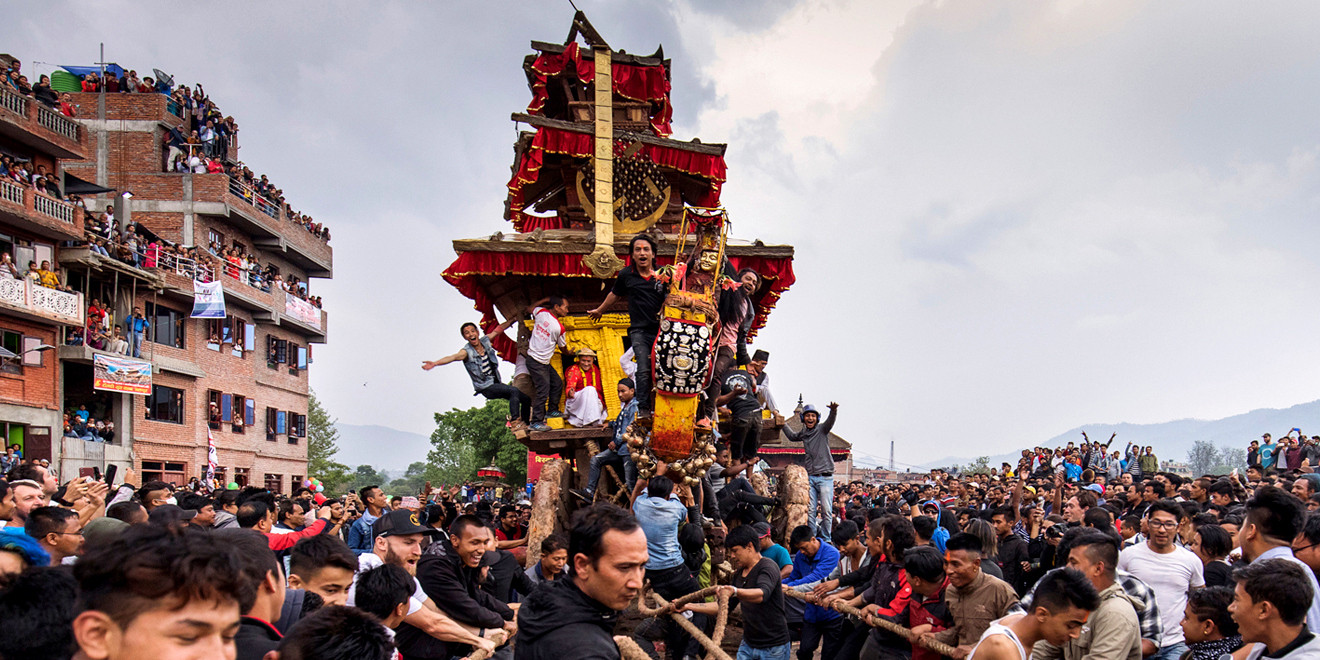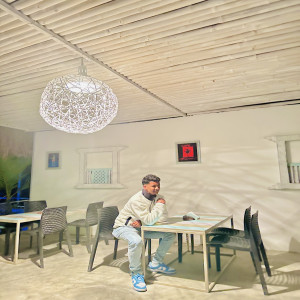Dashain
Dashain is the most significant and celebrated festival in Nepal, lasting for 15 days during the lunar month of Ashwin (late September to early October). It symbolizes the victory of good over evil and is deeply rooted in Hindu mythology, primarily revolving around the goddess Durga and her triumph over the demon Mahishasura.
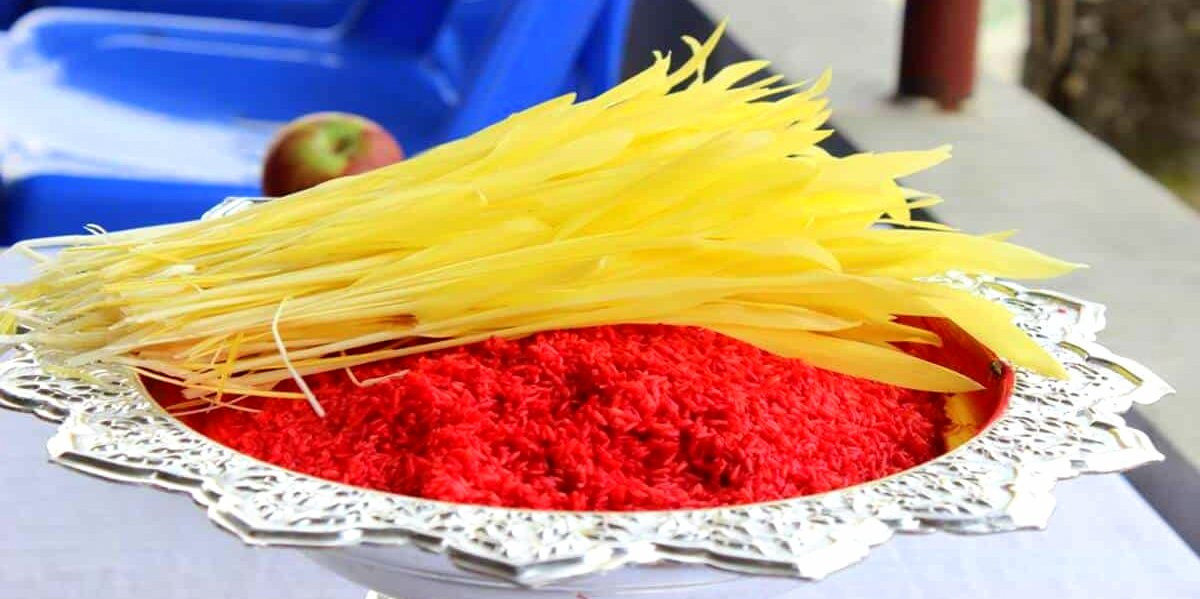
Key Components of Dashain Festival
-
Ghatasthapana: The festival begins with Ghatasthapana, the planting of barley seeds in a pot of sand, which is then kept in a sacred room. The sprouting seedlings, called Jamara, are considered auspicious and are used later in the festival.
-
Phulpati: On the seventh day, Phulpati, a sacred mixture of flowers, leaves, and fruits from various plants, is brought into homes to invoke the goddess's blessing.
-
Maha Ashtami: The eighth day, or Maha Ashtami, involves the sacrifice of buffaloes, goats, and ducks in temples dedicated to Durga. Blood, representing the fertility of the soil and future harvests, is offered to the goddess.
-
Nawami: The ninth day, Nawami, sees government offices, and even vehicles, being blessed as part of the celebrations.
-
Vijaya Dashami: The tenth day, and the most significant, is Vijaya Dashami, where elders apply a mixture of yogurt, rice, and vermilion to the foreheads of younger relatives. This Tika, along with the Jamara and blessings, is believed to bring good fortune.
-
Kojagrata Purnima: The festival concludes on the full moon day, known as Kojagrata Purnima, which signifies the end of the festival.
Cultural Significance: Dashain has a profound impact on the social and cultural fabric of Nepal. It is a time for family reunions, exchange of gifts and blessings, and elaborate pujas. Schools, offices, and businesses close for about 10 days, allowing even those Nepalese living and working abroad to return home and participate in the festivities.
Economic and Social Impact: Economically, Dashain is a boon for retailers and businesses as people indulge in buying new clothes, gifts, and plentiful supplies of food. Socially, it reinforces familial and societal bonds, with people visiting relatives, including distant ones, and receiving blessings.
Dashain is not only a religious observance but also a celebration of life, prosperity, and renewal, playing a pivotal role in uniting the diverse cultures and communities of Nepal under the shared joy and spirituality of the festival.
Tihar
Tihar, also known as Deepawali or Yamapanchak, is one of the most colorful and significant festivals in Nepal, celebrated for five days during the lunar month of Kartik (late October to early November). This festival, known for its lights and colors, is the second biggest festival after Dashain in the Nepalese cultural calendar.
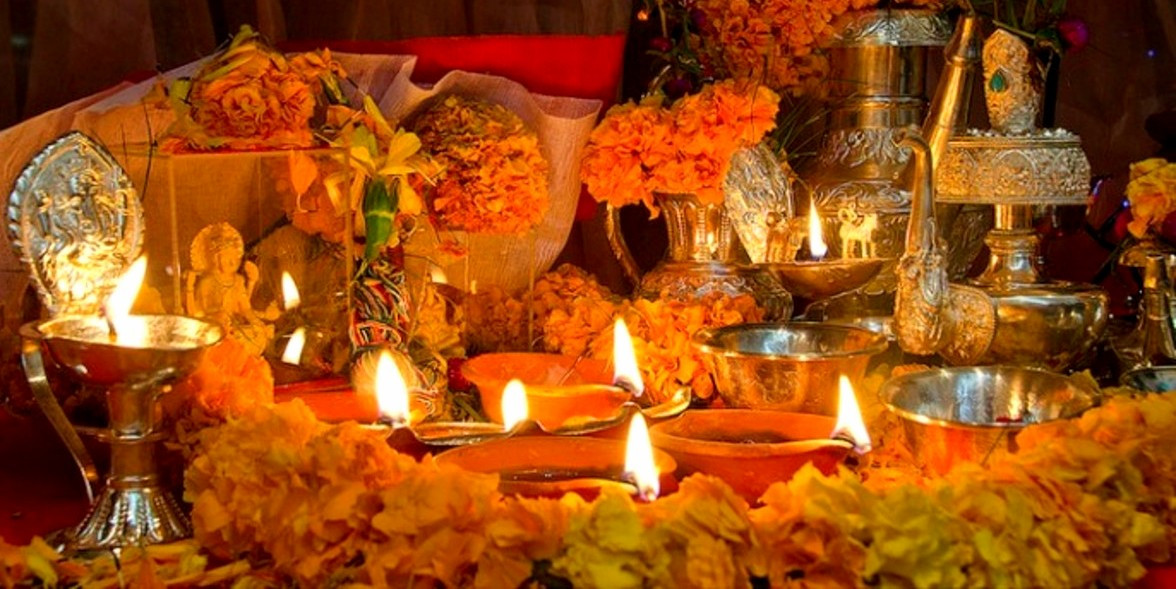
Key Components of Tihar Festival
-
Kaag Tihar (Day 1): The festival begins with Kaag Tihar, where crows are worshipped as messengers of death. People leave sweets and dishes on the roofs of their houses to please the crows and ward off grief and death from their homes.
-
Kukur Tihar (Day 2): The second day is dedicated to dogs, which are considered loyal companions and guardians. Dogs are adorned with flower garlands, tika (a mark on the forehead), and offered delicious food to honor their importance in human lives.
-
Laxmi Puja (Day 3): The third day is the most important day of Tihar, known as Laxmi Puja. People clean their houses and decorate them with lights and rangoli to invite Laxmi, the goddess of wealth and prosperity. In the evening, candles, oil lamps, and electric lights illuminate every home, making this the "Festival of Lights."
-
Govardhan Puja (Day 4): On this day, oxen are worshipped. A puja is performed where a mound of cow dung is used to represent Govardhan Mountain, which, according to mythology, was lifted by Lord Krishna to protect the villagers of Vrindavan from torrential rains.
-
Bhai Tika (Day 5): The final day of the festival is dedicated to the bond between brothers and sisters. Sisters apply a seven-colored tika to their brothers' foreheads and pray for their long life and prosperity. In return, brothers give gifts to their sisters.
Cultural Significance: Tihar is not just a festival of lights; it embodies the reverence of humans towards animals, showcases the bond between siblings, and celebrates the victory of light over darkness and knowledge over ignorance. Each day of Tihar has its own unique cultural significance that reflects the harmonious coexistence of nature and humanity, promoting messages of respect and reverence across different aspects of life.
Social and Economic Impact: Socially, Tihar enhances community bonds as people visit each other's homes to play Deusi-Bhailo, traditional songs and dances, and exchange gifts and greetings. Economically, like Dashain, Tihar is a time for significant spending as people buy decorations, sweets, and gifts, boosting retail and small businesses.
Tihar is a vibrant testament to Nepal’s rich cultural tapestry, reflecting the country’s ethos of kinship, respect for nature, and joyous celebration.
Holi
Holi, popularly known as the Festival of Colors, is one of the most vibrant and joyous festivals celebrated in Nepal. It marks the arrival of spring and the victory of good over evil. Holi is celebrated with great enthusiasm in Nepal, typically in the month of Phalgun (March), and lasts for two days, with the first day called Chhoti Holi or Holika Dahan and the second day known as Dhuleti or Holi.
Key Components of Holi Festival
-
Holika Dahan (Chhoti Holi): The festival begins with Holika Dahan, where people light bonfires to commemorate the burning of Holika, the demoness in Hindu Vedic scriptures, and the triumph of good over evil. The ritual symbolizes the destruction of negative forces and the renewal of positive energy.
-
Color Celebrations (Dhuleti): The next day is the main event where the air is filled with vibrant colors. People of all ages throw colored powder (gulal) and water at each other. Streets and homes burst into colorful spectacles, with music, dance, and festive foods adding to the joyous atmosphere.
-
Community Gatherings: Holi is a time when social norms relax, allowing for unrestrained fun. People gather in public spaces, and groups move from one neighborhood to another, singing and dancing to traditional Holi songs, often accompanied by drums and other musical instruments.
-
Cultural Performances: In cities like Kathmandu and Pokhara, cultural programs and parties are organized, featuring live music, dance, and various performances that attract both locals and tourists.
-
Festive Foods: Traditional foods and drinks, such as bhang (made from cannabis), are consumed during Holi, which contribute to the uninhibited festivities. Sweet dishes like gujiya, a dumpling filled with sweetened milk solids and dried fruits, are also popular.
Cultural Significance: Holi plays a significant role in fostering community spirit and breaking down social barriers. It is a time when people forgive and forget past grievances, renewing relationships. The use of vibrant colors symbolizes life, joy, and the promise of a bright future. Holi is also linked with the legendary love of Radha and Krishna, adding a dimension of romance and divine love to the celebrations.
Social and Environmental Considerations: While Holi is a festival of joy, it comes with challenges such as the use of synthetic colors which can be harmful to health and the environment. In recent years, there has been a growing awareness and push towards using natural, eco-friendly colors made from flowers and herbs.
Holi in Nepal is not only a colorful and exhilarating celebration but also an important cultural event that promotes unity, joy, and the renewal of social ties. It's a vivid expression of Nepalese cultural diversity and the spirited life of its people.
Indra Jatra
Indra Jatra is one of the most spectacular and revered festivals celebrated in Kathmandu, Nepal. It is an eight-day festival that falls in September and marks the end of the monsoon season. The festival is named after Indra, the king of heaven and the god of rain, and is celebrated with much enthusiasm, especially in the Kathmandu Valley.
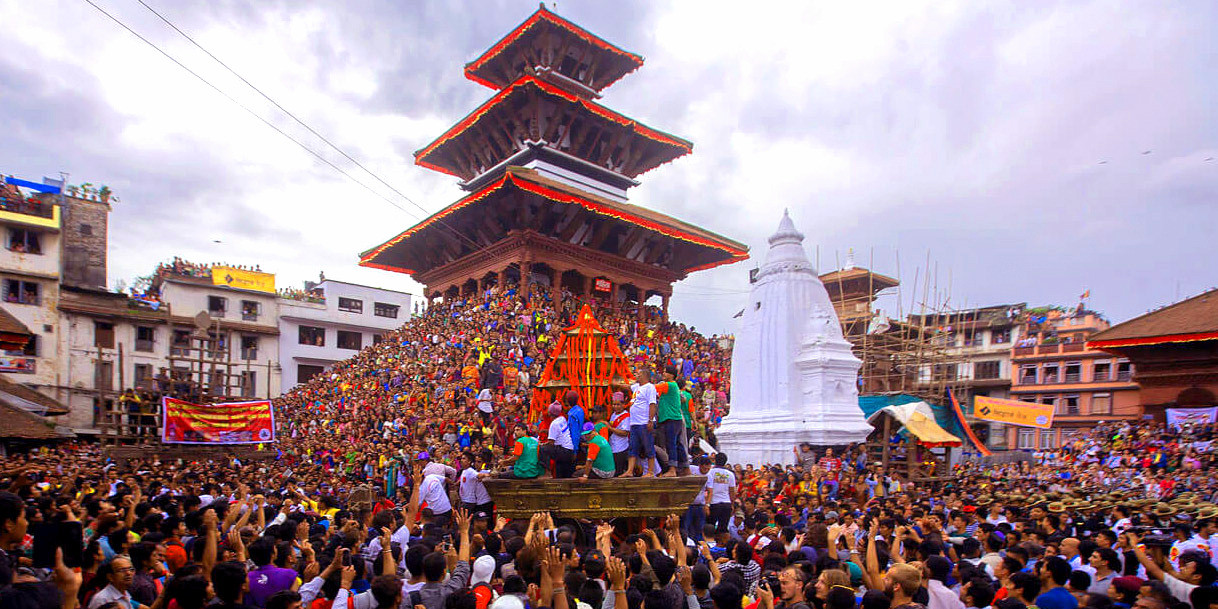
Key Components of Indra Jatra Festival
-
Kumari Jatra: One of the highlights of Indra Jatra is the procession of the Kumari, the living goddess. The Kumari is carried in a chariot through the streets of Kathmandu, accompanied by two other chariots carrying representations of Ganesh and Bhairab. This procession is a major attraction and draws huge crowds of devotees and tourists alike.
-
Lakhe Dance: Throughout Indra Jatra, masked dancers known as Lakhes perform in the streets. These traditional dancers, dressed as demons, are believed to drive away evil spirits. The Lakhe dance is an intense performance that combines dramatic facial expressions and energetic movements, captivating the audience.
-
Pole Raising (Yosin or Linga): The festival begins with the erection of a ceremonial pole called Yosin or Linga at Basantapur Durbar Square. This pole, a freshly cut tree festooned with colorful cloths, is raised to invite Indra to descend from heaven.
-
Samay Baji and Offerings: Throughout Indra Jatra, traditional Newari food known as Samay Baji is prepared and offered to gods and ancestors. This dish is a combination of flavors and ingredients, including beaten rice, smoked fish, and meat, meant to honor the deities and the deceased.
-
Indra’s Capture and Release: A unique aspect of Indra Jatra is the reenactment of the mythological story where Indra is captured by the people of Kathmandu for stealing flowers for his mother. The story ends with his release, symbolizing forgiveness and the blessings of rain and prosperity that Indra bestows upon the city.
Cultural Significance: Indra Jatra serves multiple cultural functions. It is a time for thanking the gods for the rain, commemorating the deceased, and ensuring the protection of the city from evil spirits for the coming year. The festival also strengthens community bonds as people from various parts of the city and surrounding areas gather to celebrate.
Social Impact: The festival is a significant tourist attraction, bringing many visitors to Kathmandu, which boosts local businesses and promotes Nepali culture internationally. It provides a platform for the younger generation to connect with their heritage and for different communities within Kathmandu to engage in shared rituals and celebrations.
Indra Jatra not only showcases the rich cultural tapestry of Nepal but also highlights the spiritual and mythical heritage of Kathmandu, making it an essential experience for both locals and visitors wishing to dive deep into the heart of Nepalese tradition.
Maghe Sankranti
Maghe Sankranti, celebrated on the first day of the month of Magh in the Bikram Sambat calendar (mid-January), marks the winter solstice according to the Hindu solar calendar and heralds the increase of daylight hours, signifying the arrival of warmer weather. This festival is one of the major harvest festivals of Nepal, widely celebrated across the country by various communities, each adding their unique customs and traditions to the festivities.
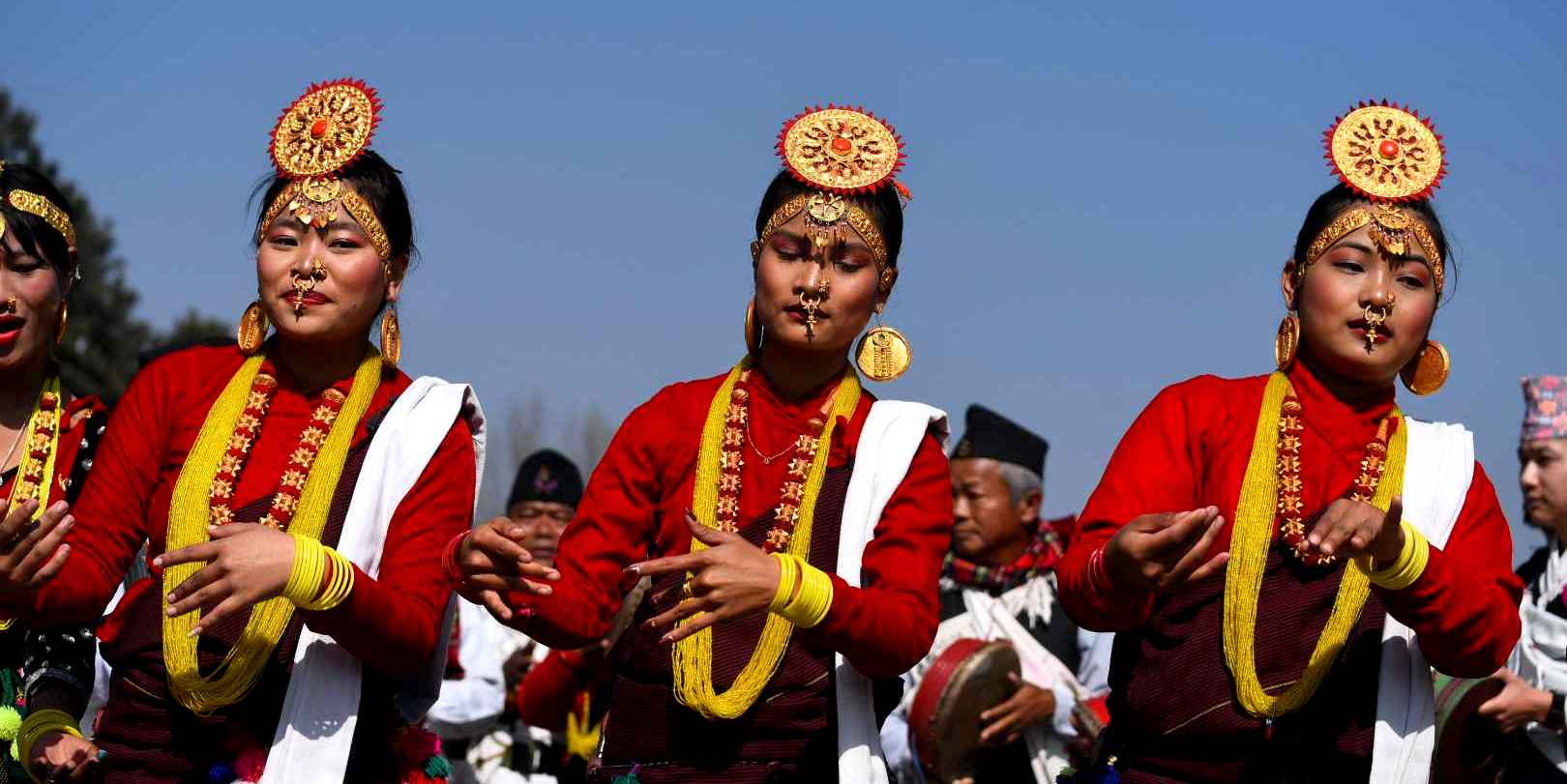
Key Components of Maghe Sankranti
-
Ritual Baths: One of the significant traditions of Maghe Sankranti is taking holy baths in rivers or ponds. Devotees believe that a dip in sacred waters during Maghe Sankranti purifies the soul and washes away sins. In particular, thousands of pilgrims visit the confluence of sacred rivers to perform their rituals, such as at Devghat.
-
Sesame Seeds and Molasses: Consuming til (sesame seeds) and chaku (molasses) is another critical aspect of this festival. These foods are considered healthful in the cold weather and are thought to bring good luck. Dishes made from yam and sweet potatoes are also popular because they are believed to keep the body warm and provide essential nutrients.
-
Feasting and Family Gatherings: Maghe Sankranti is also a time for family reunions where special dishes are prepared and shared among family members. It's a time to enjoy the fruits of the harvest, reflecting gratitude and the bonds within the family.
-
Charity and Almsgiving: Giving to the needy is a common practice during Maghe Sankranti. People distribute food, clothes, and money to the poor, which is believed to bring blessings and prosperity to the giver.
-
Cultural Events: In some regions, cultural festivals, fairs, and events are organized, showcasing traditional music, dance, and local handicrafts. These events serve both a social and economic purpose, strengthening community ties and supporting local artisans.
Cultural Significance: Maghe Sankranti is deeply embedded in the agricultural lifestyle of Nepal and marks the end of the winter season and the beginning of a more fertile and prosperous time. It is a festival that honors the sun god, Surya, thanking him for his blessings and seeking his continued favor for a good harvest.
Social and Economic Impact: The festival boosts local economies, especially in rural areas, where fairs and markets see increased activity. The preparation for the festival also encourages the consumption of seasonal and locally produced goods, supporting small farmers and producers.
Maghe Sankranti not only celebrates the change of season and agricultural bounty but also reinforces social and familial ties, making it a cherished time of year in Nepal's festive calendar.
Teej
Teej is a significant Hindu festival celebrated by women across Nepal and Northern India, marking the advent of the monsoon season. It is observed for three days and is dedicated to the goddess Parvati, commemorating her union with Lord Shiva. Teej is renowned for its vibrant display of women's devotion, both in fasting and festivities, as women pray for the well-being of their husbands and for a happy married life.
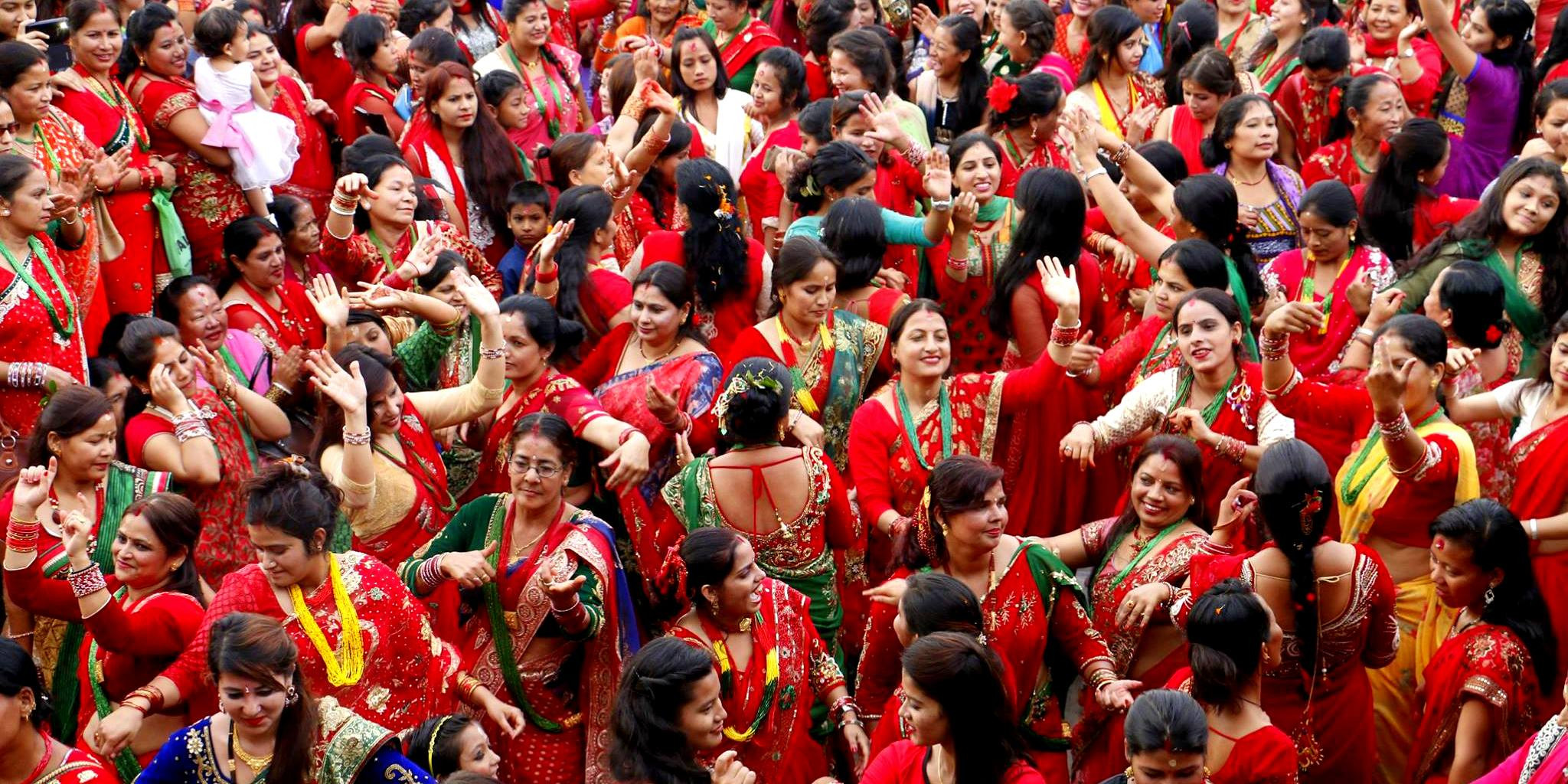
Key Components of Teej Festival
-
Fasting: The most rigorous aspect of Teej is the fast undertaken by married women, which is observed without water and food for 24 hours. This fast, known as Nirjala Vrat, is performed to seek the blessings of Shiva and Parvati for marital bliss and the longevity and prosperity of their husbands.
-
Rituals and Prayers: The festivities start with women gathering at Shiva temples or designated holy places. They perform traditional puja, sing hymns, and make offerings of flowers, sweets, and coins. The red color, symbolizing love and marital delight, is prominent in women’s attire and offerings.
-
Dressing Up: Women dress in their finest clothes, typically red saris with gold embroidery and adornments. They also wear heavy jewelry and apply intricate mehndi (henna) patterns on their hands and feet as symbols of prosperity.
-
Dancing and Singing: Teej is also celebrated with songs and dances. Women gather in groups to sing traditional songs that express joy, hope, and sometimes the pain of separation from loved ones. The dances are lively and often continue late into the night.
-
Teej Katha: Listening to the Teej Katha (stories of Parvati’s devotion to Shiva) is another critical part of the festival. These stories are recited at gatherings and temples, serving as a reminder of the virtues and dedication of Goddess Parvati.
Cultural Significance: Teej allows women to return to their maternal homes, strengthening the ties between their birth families and their in-laws. It’s a time for sisters, daughters, and mothers to bond and share in the rituals and festivities, reaffirming their support for one another.
Social and Environmental Considerations: While Teej is a celebration of life and marital fidelity, it also highlights the endurance and spiritual strength of women. However, the festival's emphasis on fasting can have health implications for some participants, especially pregnant or ill women. Moreover, the use of synthetic materials and non-biodegradable plastics in decorations and offerings has raised environmental concerns, prompting a move towards more sustainable practices.
Teej is not just a festival; it's a vivid expression of the cultural and spiritual aspirations of Nepalese women, showcasing their resilience, devotion, and the rich traditions of Hindu mythology.
Janai Purnima
Janai Purnima, also known as Rakshya Bandhan, is a sacred festival celebrated by Hindus across Nepal. It typically falls in the month of Shrawan or August, marking the full moon day of the lunar calendar. This festival is significant for its emphasis on renewal of spiritual vows and strengthening of bonds between brothers and sisters.
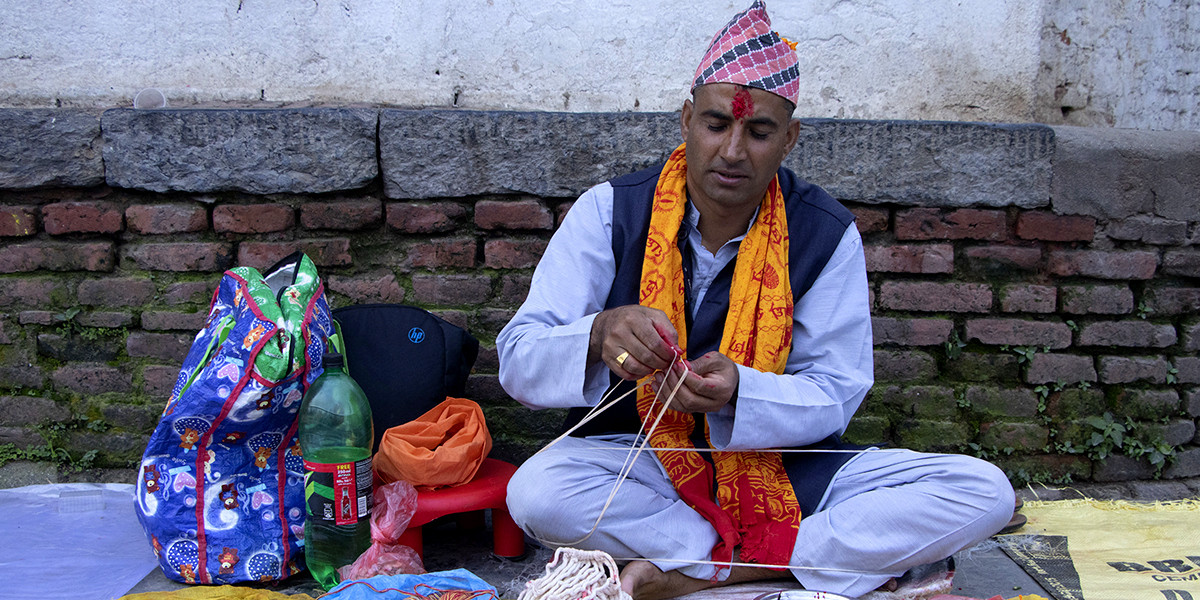
Key Components of Janai Purnima
-
Changing of the Janai: The primary ritual of Janai Purnima involves Brahmin and Chhetri men changing their Janai, a sacred thread worn across the chest which they receive during their Bratabandha ceremony (a coming-of-age ritual). The old threads are replaced with new ones after a purification ritual, which is meant to reaffirm their commitment to religious duties and moral responsibilities.
-
Rakshya Bandhan: Simultaneously, a wider celebration known as Rakshya Bandhan occurs, where sisters tie a protective thread (Rakhi) around their brothers' wrists. This thread symbolizes the sister's wishes for her brother's long life and prosperity, and in return, brothers vow to protect their sisters.
-
Sacred Thread Ceremony: The sacred thread ceremony is not limited to personal use; threads are also tied around people’s wrists by priests. These threads, blessed with mantras, are believed to protect the wearer from evil and bring good luck.
-
Festive Foods: A variety of special dishes are prepared and shared among family and friends. Kwati, a soup made from nine different types of sprouted beans, is a traditional dish eaten on this day, believed to rejuvenate the body and soul.
-
Religious Pilgrimages: Many devotees take this opportunity to perform pilgrimages to sacred rivers and lakes. Places like Gosainkunda are thronged by pilgrims who take holy dips and perform rituals to wash away their sins.
Cultural Significance: Janai Purnima is a blend of spiritual renewal and familial obligations, reflecting the deep-rooted cultural ethos of Nepal that emphasizes familial bonds and religious duties. The festival not only reaffirms the roles within the family but also ties the community together through shared rituals and celebrations.
Social Impact: The festival fosters a sense of belonging and community among participants. It provides an opportunity for family reunions and strengthens the bond between brothers and sisters through the exchange of rakhis and gifts. It’s a day when social hierarchies are blurred, and everyone participates in the communal spirit of renewal and protection.
Janai Purnima encapsulates the essence of Nepalese tradition by combining deep religious practices with vibrant social interactions, making it a significant date in the cultural calendar of Nepal. This festival not only reinforces spiritual and familial ties but also promotes a sense of community and shared heritage among its participants.
Buddha Jayanti
Buddha Jayanti, also known as Buddha Purnima, is a sacred day that marks the birth, enlightenment, and death of Siddhartha Gautama, who later became known as Buddha. This triple anniversary is observed on the full moon day of the lunar month Vaishakha, which typically falls in April or May. It is a day of immense significance not just in Nepal, where Buddha was born in Lumbini, but also across the Buddhist world.
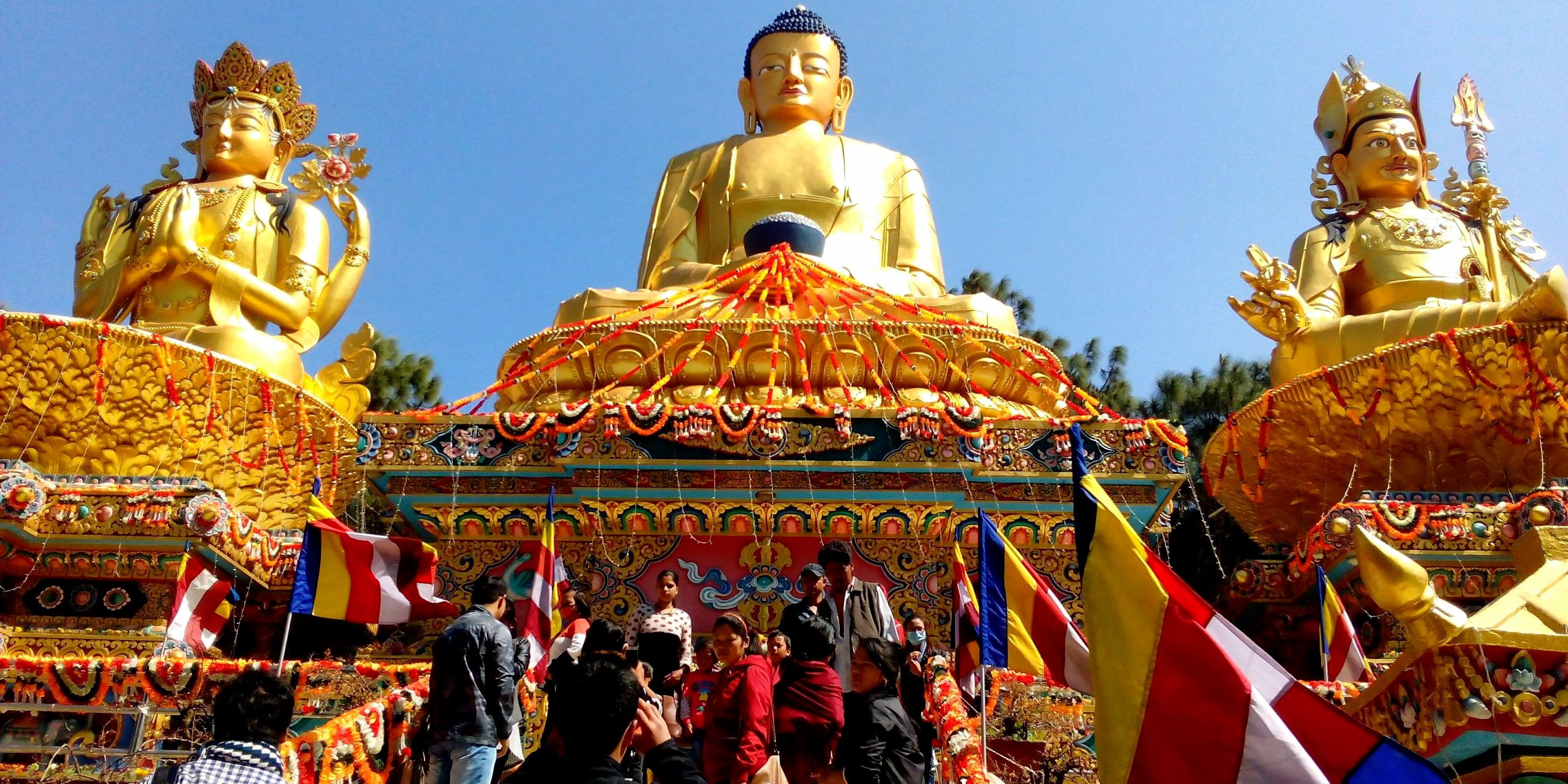
Key Components of Buddha Jayanti
-
Visits to Sacred Sites: Pilgrims from around the world travel to Lumbini, the birthplace of Buddha, to participate in the celebrations. The site, which houses the ancient Mayadevi Temple and a sacred Bodhi tree, becomes a focal point for prayers and rituals.
-
Prayers and Meditations: Devotees gather in monasteries and stupas to meditate and chant sutras. The air is filled with the scent of incense and the sound of bells and gongs as monks in vibrant robes lead the ceremonies.
-
Offerings and Alms: People bring offerings of food, candles, and flowers, especially the lotus, which symbolizes purity and enlightenment. Giving alms to monks is a common practice that is believed to bring merit to the giver.
-
Peace and Non-Violence Messages: Since Buddha preached non-violence and peace, Buddha Jayanti is also a day when people reaffirm their commitment to these principles. Activities often include releasing animals to symbolize the liberation of captive beings and the fostering of a compassionate spirit.
-
Cultural and Artistic Performances: Many cultural programs that include dance, music, and drama based on the life and teachings of Buddha are performed. These events serve both to educate and to celebrate the spiritual legacy of Buddha.
Cultural Significance: Buddha Jayanti is a profound reminder of the spiritual heritage of Nepal and its importance in the Buddhist tradition. It reinforces the teachings of Buddha, focusing on peace, enlightenment, and the middle path in life. The festival is a time for reflection and contemplation, urging individuals to look within and cultivate the qualities of kindness and wisdom.
Social Impact: Buddha Jayanti fosters a sense of unity and peace among people of various backgrounds. It is a day when social boundaries are blurred, and the focus is on spiritual growth and communal harmony. The festival is also important for tourism in Nepal, attracting visitors keen on exploring Buddhist culture and history.
Buddha Jayanti not only commemorates the life of one of the greatest spiritual leaders in history but also promotes a message of peace and non-violence. Celebrated with reverence and joy, it is a key date in Nepal’s cultural calendar, bringing together the faithful in a shared homage to the enlightened one.
Gai Jatra
Gai Jatra, which translates to "Cow Festival," is one of the most unique and colorful festivals celebrated in Nepal, particularly in the Kathmandu Valley. It is observed on the day after Janai Purnima, usually in August. The festival originally began in the medieval period under the reign of King Pratap Malla, who introduced it to help his queen cope with the death of their son. Today, Gai Jatra not only commemorates the lost lives of the past year but also serves as a celebration that blends humor, satire, and joy.
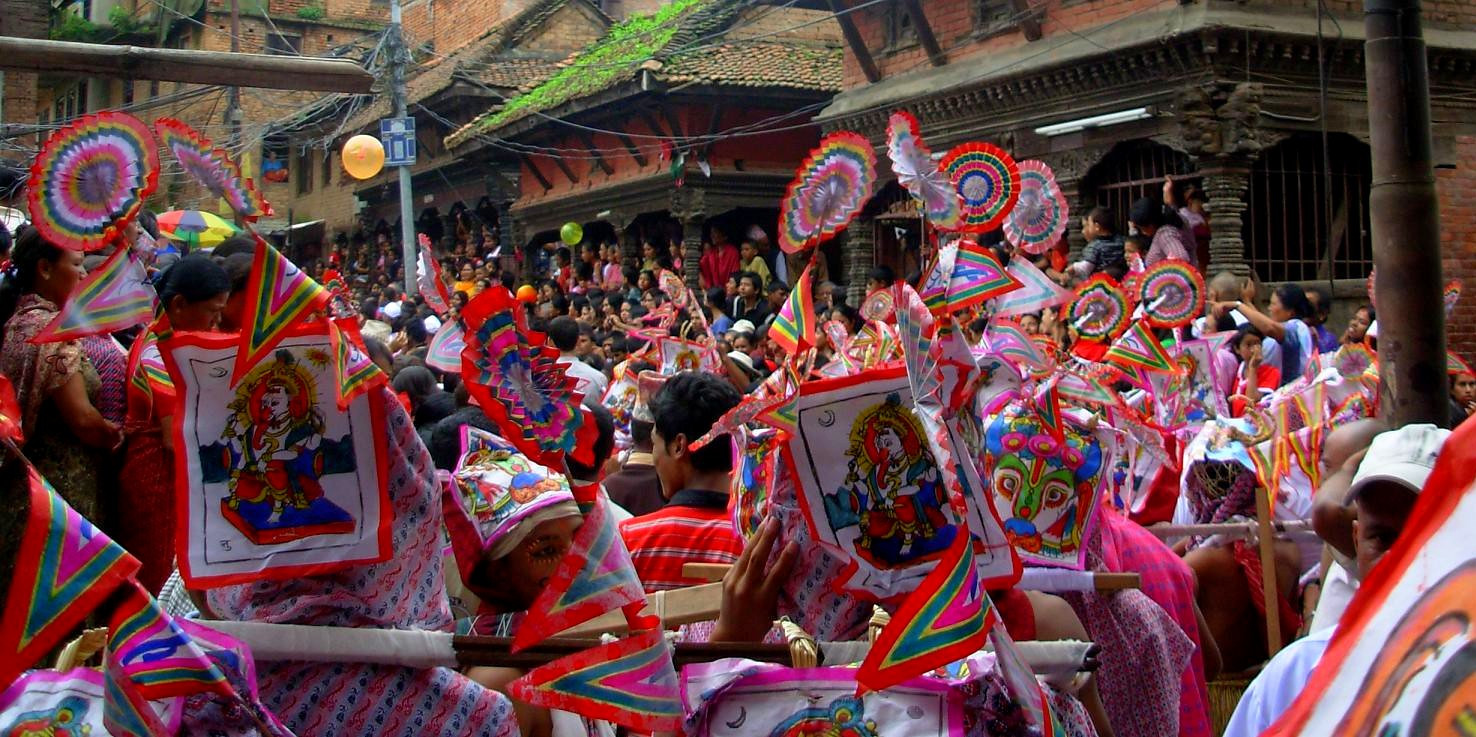
Key Components of Gai Jatra
-
Cow Procession: Traditionally, families who have lost a loved one during the past year lead a procession through the streets with a cow. The cow is considered a sacred animal in Hinduism and is believed to help guide the departed souls to heaven. In cities where cows may not be readily available, young boys dressed in cow-like attire or elaborate costumes can also lead the procession.
-
Satire and Humor: Gai Jatra is unique for its incorporation of humor and satire into the mourning process. It features comedic performances, jokes, and satirical skits that critique social norms and politics. This aspect of the festival reflects the belief that laughter and joy can help ease the pain of loss.
-
Masks and Costumes: Participants often dress in colorful costumes and masks. You'll see a range of characters from mythical beings to political figures, adding a theatrical element to the procession.
-
Dance and Music: Traditional music and dance are integral parts of Gai Jatra, with performances that keep the atmosphere lively and festive. These performances not only entertain but also help in communal bonding and healing.
-
Public Feast and Gatherings: It is also a day for public feasting and gatherings. Families often distribute food and sweets among participants and onlookers, fostering a sense of community and shared support.
Cultural Significance: Gai Jatra serves multiple purposes—it helps people accept and process their grief, brings the community together in support of those who have lost loved ones, and uses humor to critique and reflect on societal issues. The festival underscores the Nepalese cultural attitude towards death and renewal, emphasizing that life goes on and the community plays a crucial role in supporting each other through grief.
Social Impact: This festival not only aids in the communal processing of grief but also provides a platform for free expression through satire and humor, often addressing social injustices and political issues. Gai Jatra is a significant social event that allows people, particularly the youth, to engage with cultural and contemporary issues in creative ways.
Gai Jatra is a profound testament to the resilience of the human spirit, illustrating how culture can weave together celebration, remembrance, and social critique in meaningful and transformative ways.
Maha Shivaratri
Maha Shivaratri, which translates to "the Great Night of Shiva," is a profoundly sacred Hindu festival dedicated to Lord Shiva. Celebrated annually, usually in February or March (the month of Falgun), this festival commemorates the day when Shiva performed the heavenly dance of creation, preservation, and destruction. It is one of the most significant and revered festivals in Nepal, particularly at the Pashupatinath Temple in Kathmandu, one of the most important Shiva temples in the world.
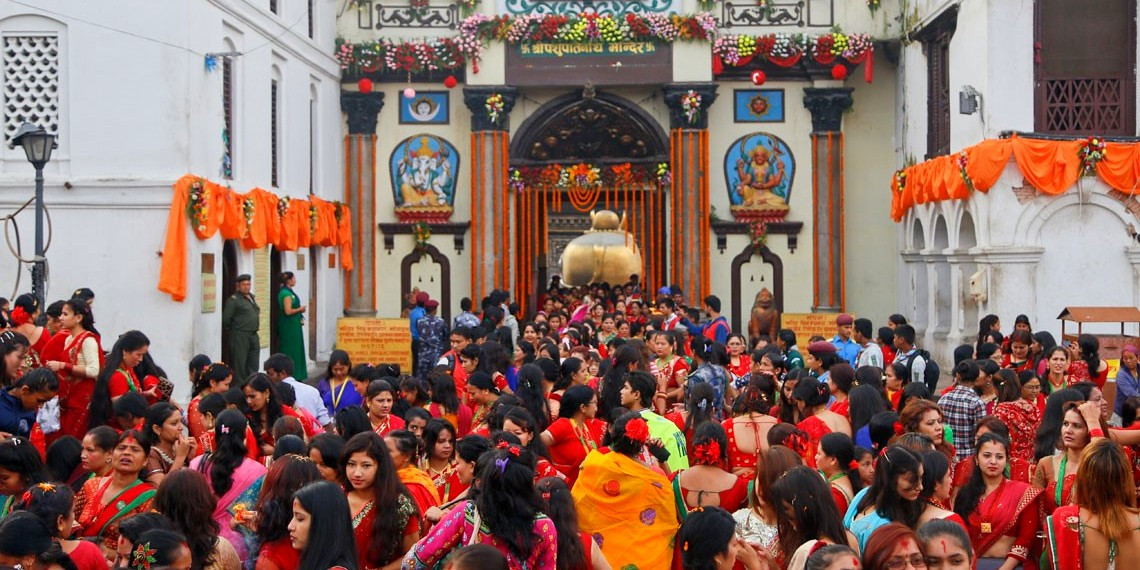
Key Components of Maha Shivaratri
-
Fasting and Vigil: Devotees observe Maha Shivaratri by fasting throughout the day and night and performing a vigil. They stay awake all night, singing hymns and prayers in honor of Lord Shiva, reflecting his attributes of resilience and withdrawal from worldly pleasures.
-
Night of Worship: The core ritual of Maha Shivaratri involves the worship of the Shiva Lingam, the iconic representation of Shiva. Milk, water, honey, and bael leaves are offered to the Lingam. These offerings are believed to cleanse the soul, symbolizing purification and redemption.
-
Holy Baths: Pilgrims and worshippers take a holy bath in the sacred rivers early in the morning, believed to cleanse their sins. The Bagmati River flowing through the Pashupatinath Temple becomes a focal point for these rituals.
-
Sadhus and Austerities: Maha Shivaratri is especially important for sadhus (holy men), who are seen smeared in ashes and displaying their devotion through various austerities. The festival is a rare opportunity to see sadhus who practice severe penances and are followers of Shiva.
-
Cultural Festivities: The area around Pashupatinath and other Shiva temples across Nepal is vibrant with stalls, shops, and small fairs. Cultural programs and classical music performances dedicated to Shiva are held, adding to the spiritual ambiance.
Cultural Significance: Maha Shivaratri is not only a religious observance but also a night that celebrates the deeper spiritual messages conveyed by Shiva. It emphasizes overcoming darkness and ignorance in life and the world, symbolized by the observance of a night-long vigil.
Social Impact: The festival draws thousands of pilgrims from across Nepal and India, making it a significant event for religious tourism in Nepal. It strengthens communal bonds as people from various walks of life come together to participate in the sacred celebrations.
Maha Shivaratri serves as a reminder of the virtues of self-restraint, meditation, and understanding the impermanent nature of the world. Celebrated with great reverence and enthusiasm, it provides a deep insight into the spiritual life of Nepalese people and their devotion to Lord Shiva.
Rules and Regulations for Top 10 Festivals in Nepal
The festivals in Nepal are vibrant and deeply ingrained in the cultural fabric of the country. While participating in or observing these festivals, there are several general rules and regulations to keep in mind to ensure respect for the traditions and the people celebrating. Here’s a guideline tailored for the top 10 festivals in Nepal:
-
Respect Religious Sensitivities: Many festivals are religious in nature. Participants and spectators should dress modestly and behave respectfully in temples and near religious processions.
-
Follow Local Customs: Each festival may have its own set of customs and traditions. It’s advisable to learn about these practices beforehand or follow the lead of locals, whether it involves taking off shoes, participating in rituals, or the correct way to greet and interact with participants.
-
Environmental Considerations: Many festivals involve the use of materials like plastics and non-biodegradable items. Efforts should be made to minimize environmental impact by avoiding littering and opting for eco-friendly alternatives when participating in festivities like Holi or Tihar.
-
Animal Welfare: During festivals like Dashain, animal sacrifice is common. Observers should be prepared for this aspect of the festival and respect the sentiments of the local population regarding these traditions.
-
Photography Restrictions: Ask for permission before taking photos, especially during sensitive moments or of specific cultural rituals. Some areas or temples might have restrictions on photography.
-
Alcohol and Substance Use: The use of substances like alcohol or cannabis may be ritualistic in some festivals like Maha Shivaratri but is not generally acceptable in public or religious spaces. Always follow local laws and customs regarding substance use.
-
Participation in Rituals: While many festivals invite and appreciate participation from everyone, certain rituals may be reserved for locals or those of specific faiths. Always ensure that your participation is welcomed and appropriate.
-
Public Safety and Conduct: Large crowds are common at major festivals. It’s important to follow any safety instructions provided by local authorities, respect crowd control measures, and maintain decorum to ensure a safe environment for all attendees.
-
Financial Transactions: During festivals, especially those involving fairs or markets, ensure that financial transactions are transparent. Supporting local artisans and vendors by purchasing local goods can also contribute positively to the community.
By Following these guidelines, visitors can enjoy the rich tapestry of Nepalese festivals respectfully and responsibly, ensuring a positive experience for both themselves and the local communities involved.
Nepal’s top 10 festivals beautifully reflect its rich cultural heritage and profound spiritual traditions. From the majestic celebrations of the Dashain Festival to the sacred rituals of Maha Shivaratri at Pashupatinath, each festival carries unique stories and customs that nurture community ties and preserve cultural continuity. These celebrations not only bring people together but also offer visitors a meaningful glimpse into Nepal's diverse cultural identity. Experiencing these festivals creates unforgettable memories for both locals and travelers, showcasing the country’s deep-rooted values and vibrant spirit. It’s no wonder Nepal is such a captivating destination for cultural exploration.
FAQs for Top 10 Festivals in Nepal
Q: What are the dates for the Dashain Festival?
A: Dashain usually falls in late September or early October, depending on the lunar calendar. The exact dates vary each year.
Q: How can I participate in the Holi color festival in Nepal?
A: Holi is celebrated openly in the streets, parks, and public spaces across Nepal. Join the festivities by going to these areas, dressed in old clothes that can get stained, and be ready to be covered in colorful powders!
Q: Are there any special customs I should follow during Tihar?
A: During Tihar, it's customary to light lamps and create Rangolis at home entrances to invite good fortune. Participating in these customs as a visitor is appreciated, but always show respect and ask for local advice on proper practices.
Q: What should I expect during the Teej Festival?
A: Expect to see women fasting, dressed in red sarees, and engaging in dances and prayers. While Teej is primarily for women, everyone can observe the rituals and enjoy the festive atmosphere.
Q: Where is the best place to observe Indra Jatra?
A: The best place to experience Indra Jatra is in Kathmandu Durbar Square, where the festival's major processions and traditional dances occur.
Q: What food is traditionally eaten during Maghe Sankranti?
A: Traditional foods for Maghe Sankranti include sesame seed laddus, yam, and sweet potatoes, believed to provide health benefits during the colder months.
Q: Can non-Hindus participate in Janai Purnima rituals?
A: Non-Hindus are welcome to observe Janai Purnima festivities, although wearing the sacred thread is typically reserved for Hindu men. Attending the festival and observing the rituals are great ways to experience and respect the culture.
Q: What happens during Gai Jatra in Kathmandu?
A: Gai Jatra in Kathmandu features a parade of cows or children dressed as cows, followed by music, dance, and satirical performances that address societal issues.
Q: How is Buddha Jayanti celebrated in Nepal?
A: Buddha Jayanti is marked by prayers, meditations, and visits to Buddhist temples like Swayambhunath and Boudhanath. Many people also participate in ceremonial light offerings and view religious art exhibitions.
Q: What is the significance of fasting during Maha Shivaratri?
A: Fasting during Maha Shivaratri is believed to cleanse the soul, commemorate Lord Shiva's overcoming of darkness and ignorance, and encourage virtues such as honesty, non-injury to others, and forgiveness.
For the Nepal tour, please click here.
If you are looking for different kinds of Nepal Tours or Trekking Packages, feel free to contact us.
